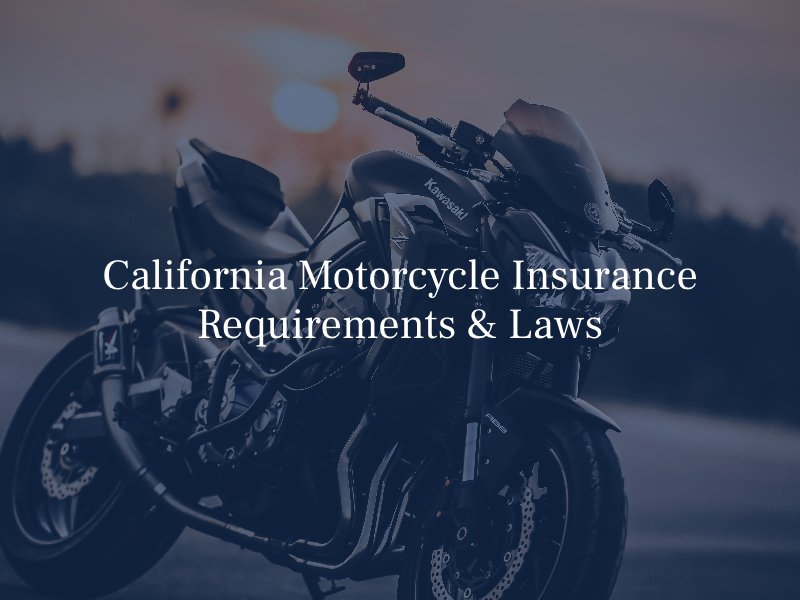California Motorcycle Insurance Requirements & Laws
December 27, 2022 Posted In Motorcycle Accidents
Anyone who owns or rides a motorcycle in California is required by law to carry insurance. Complying with the law is critical as it will protect you from significant financial risk if you are involved in an accident.

Motorcycle Insurance Coverage in California
California has specific minimum insurance coverage requirements for motorcyclists under California Vehicle Code §16056. It is also referred to as 15/30/5 coverage, which includes:
- $15,000 for injury or death to one person
- $30,000 for injury or death to more than one person, and
- $5,000 for property damage.
Motorcyclists must carry valid proof of insurance and provide it when:
- Requested by law enforcement,
- Renewing vehicle registration, or
- Involved in an accident.
Failure to provide proof of financial responsibility after a collision can result in fines and license revocation.
Underinsured and Uninsured Motorist Coverage
Motorcycle insurance providers must offer uninsured motorist bodily injury (UM) and underinsured motorist coverage (UIM) by law (California Insurance Code §11580.2). These types of insurance are optional, but you must decline in writing. Uninsured or underinsured motorist coverage helps motorcyclists in the following scenarios:
- UM: If you are involved in an accident with an uninsured motorist, UM will pay for damages up to the same limits of your liability coverage.
- UIM: If the other party you are involved in an accident with has low liability coverage limits that are not enough to pay the total costs of your injuries and losses, UIM can help make up the difference.
Alternative Methods of Establishing Financial Responsibility
California Vehicle Code §16002 offers the following alternative methods for establishing financial responsibility for an accident:
- A cash deposit of $35,000 paid to the DMV;
- Self-insurance certificate issued by the DMV; or,
- A surety bond of at least $35,000 issued by a company licensed to do business in California.
However, purchasing a motorcycle insurance policy is the easiest way to establish financial responsibility.
Motorcycle License Requirements
Having a motorcycle license is not technically required to purchase motorcycle insurance; however, most insurers will ask to see a valid motorcycle license. There are two motorcycle license options in California:
- Class M1: This license allows riders to operate any two-wheeled motorcycle and all vehicles listed in the Class M2 designation.
- Class M2: This license allows riders to operate motorized bicycles, bicycles with attached motors, and mopeds.
To operate a traditional motorcycle, you will must apply for a Class M1 license.
Other Suggested Car Insurance Coverage
California law only requires you to carry 15/30/5 in liability insurance, but it is highly recommended to increase your policy limits. The minimum coverage amounts may be inadequate to cover a severe accident, which would make you accountable for the exceeding amount. If you cause a motorcycle collision in California, the other party has the option of filing a personal injury lawsuit against you for losses beyond your policy limits.
Other types of insurance are also highly beneficial for motorcyclists to carry, such as collision coverage, which allows you to file a claim with your insurer after an accident regardless of fault. There are also medical payments, comprehensive coverage, or theft coverage. If you or a loved one has been involved in a collision, contact our Riverside motorcycle accident attorneys for qualified legal representation.